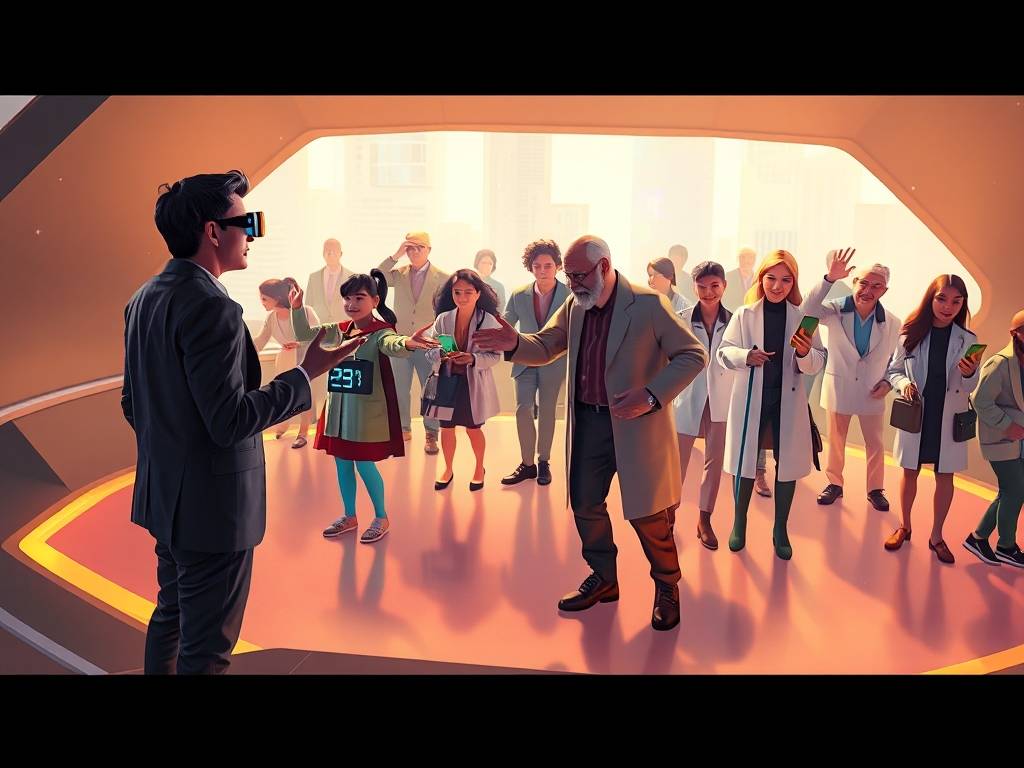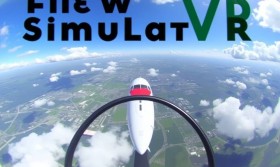The Empathy Engine: How "Generosity Simulator VR" is Redefining Charity Through Its New Missions Update
For decades, the concept of charity and generosity has often been abstract. We see statistics, hear stories, and donate funds, but a tangible, visceral connection to the impact of our giving can be elusive. Virtual Reality technology, with its unparalleled power to foster empathy by placing us directly in another’s shoes, is poised to change that. At the forefront of this movement is Generosity Simulator VR, a groundbreaking experience that is not a game, but a transformative journey. Its latest Missions Update represents a significant leap forward, moving beyond passive observation to active, purposeful engagement.
Beyond the Donation Button: The Core Philosophy
Traditional Generosity Simulator VR allowed users to experience scenarios like living in a refugee camp, navigating a city as a homeless individual, or managing a limited-resource household in a developing region. The goal was never to entertain, but to educate and emotionally resonate. Users emerged with a profoundly deeper understanding of global issues, which in turn inspired real-world action and donations to partner NGOs.

The Missions Update builds on this foundation with a crucial insight: understanding a problem is the first step, but solving it—even in a simulated environment—is what builds confidence and reinforces altruistic behavior. The update shifts the user’s role from a witness to an active agent of change.
A Deep Dive into the New Missions
The new update introduces a series of meticulously crafted missions, each developed in collaboration with field experts from organizations like UNICEF, The Red Cross, and local community aid groups. These are not fantastical quests; they are digital reflections of real-world challenges and solutions.
1. The Water Project Mission: This mission transports users to a dry, sun-scorched village. The initial goal isn't simply to witness the water shortage but to solve it. Using VR controllers, users must work with virtual villagers to plan a route to a clean water source, assemble a water filtration system (following real-world instructions), and dig shallow wells. The mission emphasizes teamwork, planning, and practical skill-building. The satisfaction of seeing the virtual village celebrate as clean water flows is a powerful emotional reward that reinforces the value of infrastructure projects.
2. The Urban Renewal: Community Garden Mission: Set in a neglected urban neighborhood, this mission tasks the user with revitalizing a vacant lot. This involves clearing debris, designing garden plots, planting virtual seeds, and encouraging hesitant but curious virtual residents to participate. The mission brilliantly simulates the concept of "community buy-in," teaching that sustainable change often requires patient collaboration and trust-building, not just resources.

3. The Educational Bridge Mission: In this scenario, users find themselves in a remote area where children cannot access a school due to a treacherous river. The mission provides limited resources—rope, wood, local expertise—and challenges the user to design and construct a simple, safe bridge. It’s a puzzle of physics and ingenuity, highlighting the importance of education and the logistical barriers that many communities face.
4. The Crisis Responder Drill: This high-intensity mission places users in the aftermath of a natural disaster. Working with a team of virtual aid workers, users must triage the injured, distribute emergency supplies efficiently, and set up temporary shelter while avoiding hazards. It’s designed to be stressful and chaotic, imparting a deep respect for the immense challenges faced by real first responders and the critical need for prepared, organized aid.
The Technology of Empathy: How the Missions Work
The magic of the Missions Update lies in its sophisticated VR systems. Haptic feedback ensures users feel the resistance of turning a wrench on a water pump or the weight of a brick. Spatial audio allows them to hear the subtle cues from virtual characters—a child’s hopeful laughter or a community elder’s words of wisdom. The AI-driven characters don’t just script; they react dynamically to the user’s choices, offering gratitude, frustration, or collaboration, making the social simulation incredibly authentic.
Most importantly, each mission concludes with a "Impact Portal." After completing the virtual task, a portal opens showing real-world video footage of the actual NGO partners performing the same task. A message appears: "Your actions here模拟ed the work of [Partner NGO]. Here is the real-world impact of your support." This direct, tangible link between the virtual act of learning and the real act of giving is the update's masterstroke.
The Ripple Effect: From Virtual Action to Real-World Change
The Generosity Simulator VR: Missions Update is more than just new content; it's a paradigm shift. It operates on the proven psychological principle that hands-on participation creates stronger commitment than passive learning. By allowing users to fail in a safe environment—to design a bridge that collapses or misallocate resources—it creates a deeper, more memorable learning experience than any success ever could.
The ultimate goal is to create a virtuous cycle: Experience -> Understand -> Act -> Donate. Users who have virtually struggled to build a well will have a far more personal and powerful connection to a charity that builds wells. Their donation is no longer an abstract act; it is a continuation of a journey they started in VR.
This update transforms Generosity Simulator VR from an empathy machine into an empowerment engine. It proves that technology’s highest calling is not to escape our world, but to better understand it and to equip us with the compassion and confidence to make a difference. It’s a bold step towards a future where giving is not just a transaction, but a deeply human connection forged in the fires of shared, simulated struggle.


















